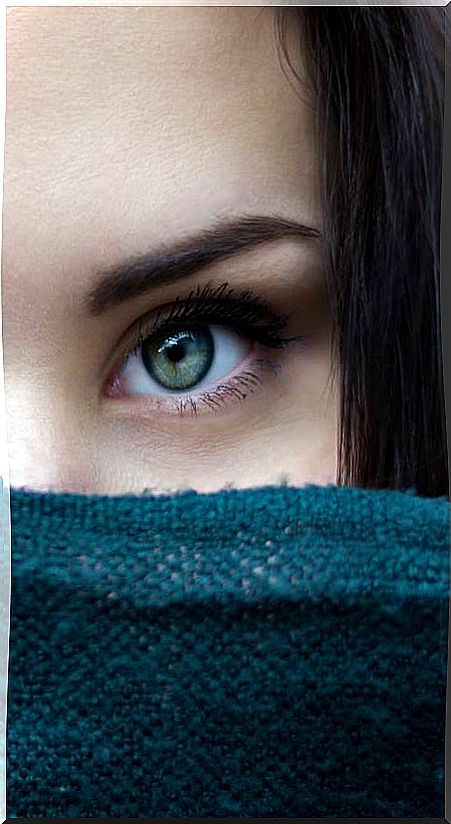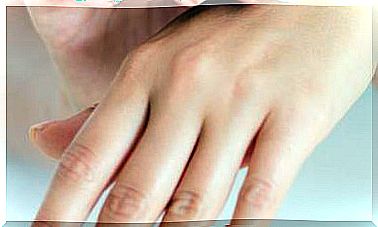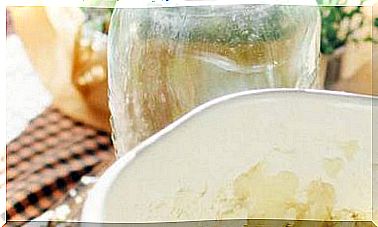How To Treat 5 Eye Problems Naturally
The eyes are a window to the beauty of the world and good habits help keep them healthy. Find out how to take care of them and solve their most common problems.

- 1. How to calm conjunctivitis
- 2. Prevent cataracts naturally
- 3. How is glaucoma produced and treated?
- 4. Macular degeneration: prevention and care
- 5. How to protect your eyes in front of the computer?
- How and when to do an eye wash
The eyes are the organs of vision, protected by eyelids and eyebrows.
They have been popularly considered “mirrors of the soul”, and nothing is so true as that pleasant thoughts impart a special glow to the eye.
We use them to observe, read, seduce, ask questions, express joy or sadness, reprimand … So many things that sometimes it is forgotten that they are also a very delicate part of the body, the only one, by the way, in which the nervous system takes direct contact with the outside.
Good habits help protect them. The eyes must be cared for both from the inside, with food and relaxation, and from the outside, through hygiene and eye washings.
Let’s see below how to prevent and treat the most common eye disorders.
1. How to calm conjunctivitis
Conjunctivitis is an inflammation of the ocular surface – the conjunctival membrane.
The behavior is similar to that of most tissues when they become inflamed: the vessels dilate and more blood arrives, so more cells are concentrated to defend or repair the area. The ocular mucosa in turn modifies the tear by increasing defensive proteins, which are very large, and this causes viscous residues or “legañas” to form.
Symptoms include red, rheumy eyes, a rubbing sensation, itching, stinging, and heaviness, depending on the cause and intensity.
The causes range from dry eyes and temporary irritative processes to more intense or lasting processes. Treatment depends on the cause, intensity and evolution of the symptoms.
The infectious conjunctivitis, caused by bacteria or viruses, are often acute and passed in days or a few weeks; although the intensity varies, the contagion is very easy. Towels should never be shared with affected people, they should be dried with disposable paper towels.
In allergic conjunctivitis it is necessary to eliminate allergens.
Good personal hygiene is essential to prevent conjunctivitis, especially of the hands.
In case of very red eyes and severe pain or worsening, after two days you should go to the ophthalmologist.
The eyewash two or three times a day can soothe irritation or mild conjunctivitis. An infusion is prepared with a mixture of cornflower and eyebright – one teaspoon per glass of mineral water – and a pinch of salt is added .
2. Prevent cataracts naturally
Cataracts are caused by the loss of transparency of the crystalline lens, a lens located behind the pupil that serves to focus sharply.
Due to the effect of ultraviolet light, diseases such as diabetes or more frequently over the years, the lens becomes opaque and vision is lost. Its appearance is influenced by other factors such as smoking, high myopia, infections or family tendencies.
An inadequate diet, aggressive environmental conditions and the body’s own oxidation also generate free radicals, which are the cause of ocular aging.
Symptoms include a slow, progressive decrease in vision. It appears cloudy, out of focus or as if it is seen through a veil, and does not improve when changing glasses.
There may also be a lower ability to capture the tonality of colors and glare with bright lights.
Cataract treatment is primarily surgical: the lens is removed and replaced by an artificial lens.
As prevention it is advisable to wear sunglasses, especially in the mountains and on the beach, avoid stress and compensate with relaxation techniques, follow a diet rich in vitamins (A, B and C) and minerals (zinc, calcium, magnesium and selenium) and avoid toxins such as alcohol or tobacco.
3. How is glaucoma produced and treated?
Glaucoma is due to a build-up of aqueous humor. This fluid nourishes the eye, but when it is produced too much or its output decreases, it accumulates inside the eye and increases the pressure in the eye. This destroys nerve cells and leads to loss of vision.
Unfortunately it does not produce symptoms until vision loss is high. Only an eye exam can detect it. A comprehensive eye exam is generally recommended starting at age 40.
The purpose of treatment is to lower the pressure in the eye through drops or surgery. The herbal medicine tries to reduce intraocular pressure and provide the nutrients needed for good eye health.
You can use mistletoe infusion (one tablespoon of dried plant per cup of water, twice a day) and blueberry, which due to its richness in anthocyanoside flavonoids and antioxidants is ideal as a neuroprotective agent.
It is recommended to eat foods rich in vitamin B1 (glaucoma patients have low levels of thiamine), vitamins A and C, and rutin, which are found mainly in citrus fruits.
Glaucoma sufferers should not abuse proteins, since these make symptoms worse; neither of stimulants like coffee or chocolate.
4. Macular degeneration: prevention and care
This degenerative disease mainly affects the center of the retina.
The retina is responsible for converting light into nerve stimuli that are transmitted to the brain. The central portion is called the “macula” and is the part responsible for the visual function of the detail.
Macular degeneration usually occurs in people over 60 years of age and is the second most common cause of blindness in old age, behind diabetes.
There are two types of age-related macular degeneration: the “dry”, of slow evolution, and the “wet”, which requires a rapid intervention by the ophthalmologist specializing in the retina.
As a cause, its relationship with free radicals has been raised , especially due to exposure to ultraviolet light, nutritional factors and lifestyle.
The most characteristic symptoms are loss of visual acuity and distorted vision. If they occur, you must quickly consult an ophthalmologist.
Treatment is based on changing habits that promote exercise, elimination of toxins such as tobacco and alcohol, and a diet rich in carotenoids such as lutein and zeaxanthin.
To prevent it, it is advisable to take grape or blueberry seed extract and ginkgo, as well as to include selenium, beta-carotene and vitamins C and E. in the daily diet.
5. How to protect your eyes in front of the computer?
Noticing tired and irritated eyes is very common when you have spent several hours in front of a computer screen. These seven easy-to-follow tips help protect your eyes and reduce eyesight.
- Take breaks. Take a walk every hour to go to the bathroom, rest, or have a drink. If you can’t get up, close your eyes and blink exaggeratedly. Every 15 minutes look out the window to a distant point.
- Regulate the lighting. Avoid direct sunlight or artificial light and use lamps that provide indirect and enveloping lighting. The lighting at work must be homogeneous, without very bright areas along with dark ones, as this forces the eyes to adapt continuously. But not all bulbs are the same – use quality lamps and bulbs. Flickering and fluorescent tubes damage your eyesight when reading. Darkness, on the other hand, makes the monitor a very annoying point of light for the eyes.
- Adjusts the monitor. Choose a quality LCD monitor with a high refresh rate. Place it at a minimum distance from your outstretched arm and at eye level, or in the case of laptops, at 45 degrees. Use a glow similar to lighting. Laptops incorporate their own screen; avoid the very low-end ones : they tend to “sacrifice” the quality of the screen and the graphics card.
- Use large letters. You can increase the default font in the browser and text editors, increase the images for editing, etc. The less you strain your eyes, the better.
- Avoid reading white text on a black background. If it’s a lot of text, try “select all” to invert the colors.
- Eliminate distances. To copy text or pass data, reduce the distance between the paper and the screen to avoid continuous focus and blur.
- Use a humidifier. In offices, the dryness of the environment due to air conditioning greatly affects the eyes, ears and nose; You can compensate your eyes by pouring water when you go to the bathroom or by putting chamomile or eyebright eye drops every two hours. At home, a humidifier prevents dry eyes and greatly reduces eye strain .
How and when to do an eye wash
The most common eye problem is dryness. While the rest of the eyeball is relatively protected, the surface of the eye is exposed to dust, smoke, pool water, foreign bodies …
Washes provide a healthy way to care for your eyes on a daily basis. To do them:
- It is advisable to buy an eye bath at the pharmacy.
- They open their eyes for a few seconds in the water and blink a little. It ends by drying the eyes and taking the opportunity to clean the eyelids and the base of the eyelashes.
- This bath cleans the ocular surface, lowers inflammation and relieves fatigue. It is recommended to do it in the morning and throughout the day when the eyes feel irritated.
- For bags that form under the eyes, two gauze pads with cold grated potato from the refrigerator are applied to the eyelids for 10 or 15 minutes . The eyes rest and the bags or dark circles disappear. The rest will make for a good night’s sleep.
Does eating healthy help you see better?
Eating fruits and vegetables regularly is one way to prevent eye problems.
- Both vitamins C and E and zinc reduce, thanks to their antioxidant effect, the damage caused by the sun’s ultraviolet rays.
- In addition, foods rich in these nutrients or in beta-carotene, lutein, zeaxanthin or omega-3 fatty acids prevent diseases such as senile macular degeneration, and delay the appearance of cataracts.
- The carotenoids are abundant carrots, pumpkins, potatoes, potatoes, cabbage, melon, apricots and cherries, while the vitamin C stands in peppers, oranges, strawberries, kiwi fruit and other vegetables.
- The vitamin E may be an oversight whole grains, almonds, sunflower seeds or flax, avocados and peanuts. For its part, zinc is found in pumpkin seeds, legumes such as chickpeas, whole grains or cabbages.
- The lutein and zeaxanthin are found in spinach, beets, corn, watercress and persimmons. In omega-3 fatty acids, foods such as flax or safflower oil and walnuts are rich.









